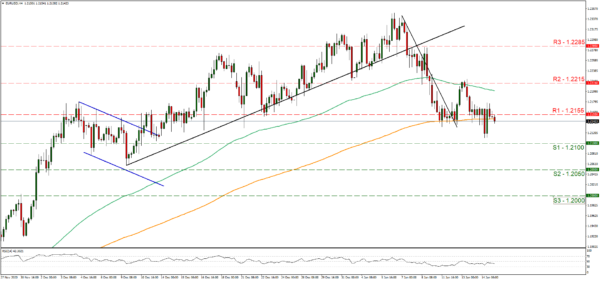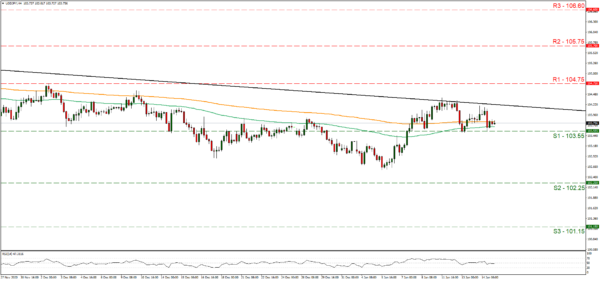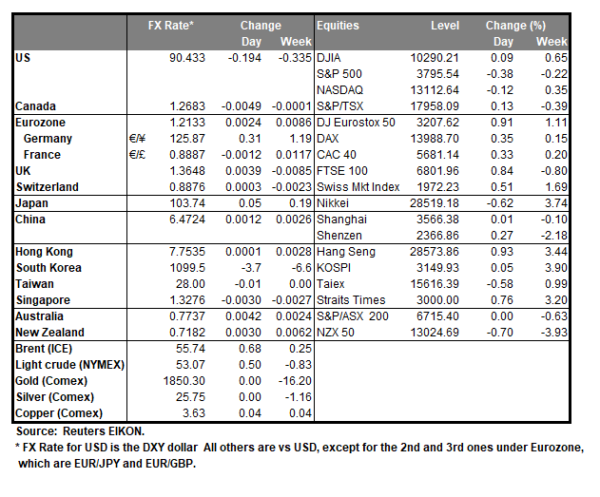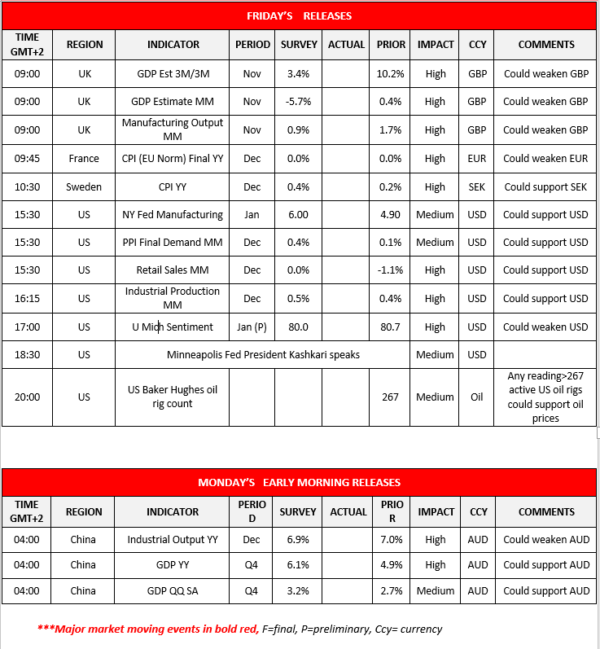The USD tended to weaken against some of its counterparts yesterday, setting its rebound in doubt after Federal Reserve Chair Jerome Powell stated on Thursday that interest rates would not rise any time soon. Powell in an interview practically expressed the opinion that the US economy has still a long way for recovery and is still far from where the Fed wants it to be and that he sees no reason to alter its highly accommodative stance “until the job is well and truly done.“ At the same time the release of President-elect Joe Biden’s $1.9 trillion stimulus, yesterday more or less failed to give the greenback some support, given that a number of points had allready been reported by the media, finding the markets ready for what it heard. Nevertheless, the fiscal stimulus if approved could provide a considerable push for the economy, expediting its recovery. It should be noted that yesterday the USD had a nasty surprise as the weekly initial jobless claims jumped and we may see traders today paying particular attention to US financial releases besides the fundamentals. USD/JPY dropped yesterday testing the 103.55 (S1) support level yet, proved unable to breach it and bounced back up. We tend to maintain a bias for a sideways motion temporarily for the pair, also given that the RSI indicator below our 4-hour chart is at the reading of 50. On the other hand, the long downward trendline incepted since the beginning of July reminds of the presence of the bears for the pair. Should the bears regain control over the pair we could see it breaking the 103.55 (S1) support line and aim for the 102.25 (S2) level. Should the bulls take over, we may see the pair breaking the prementioned downward trendline and aim if not break the 104.75 (R1) resistance line.
EUR weakens as tighter lockdowns considered
The common currency slipped against the USD, GBP and JPY yesterday as fundamentals concerning the path of the pandemic in Europe seem alarming. It’s reported by Bloomberg that France expanded a daily 12-hour curfew nationwide starting Saturday and German Chancellor Angela Merkel is promoting a tougher lockdown, given also the concerns that a more-contagious coronavirus variant could lead the infections out of control. According to German media, the tightening of the lockdown measures could include curfews and the closing of schools and in general, the spreading of the pandemic could delay Eurozone’s economic recovery and dampen its outlook. We expect that should considerations for intensified lockdown prevail among European leaders over the next two days EUR could weaken.
Technically the common currency failed to gain on the wide weakness of the USD after considerable volatility for EUR/USD and the pair landed below the 1.2155 (R1) resistance line. The pair’s inability to clearly break and remain above the 1.2155 (R1) resistance line and the fact that below our 4-hour chart the RSI indicator remains below the reading of 50 aiming for 30, tends to enhance our bearish outlook. Should the selling interest actually be maintained we could see EUR/USD breaking the 1.2100 (S1) support line and aim for the 1.2050 (S2) level. Should buyers take the initiative over the pair’s direction, we could see the pair breaking the 1.2155 (R1) resistance line and aim for the 1.2215 (R2) level.
Other economic highlights today and early tomorrow:
On a busy Friday, we note UK’s GDP rates for November, France’s final CPI (EU Normalised) rate for December and Sweden’s CPI rate also for December in the European session. In the American session, we highlight from the US, the New York Fed Manufacturing for January, the PPI rates for December, the Retail sales for December, the Industrial production growth rate also for December and the Preliminary University of Michigan consumer sentiment for January, with the latter three expected to be of higher impact. Also please note that later on, Minneapolis Fed President Kashkari is scheduled to speak. During Monday’s Asian session, we highlight the release of China’s GDP rates for Q4 as well as the industrial production growth rate for December.
Support: 1.2100 (S1), 1.2050 (S2), 1.2000 (S3)
Resistance: 1.2155 (R1), 1.2215 (R2), 1.2285 (R3)
Support: 103.55 (S1), 102.25 (S2), 101.15 (S3)
Resistance: 104.75 (R1), 105.75 (R2), 106.60 (R3)


















